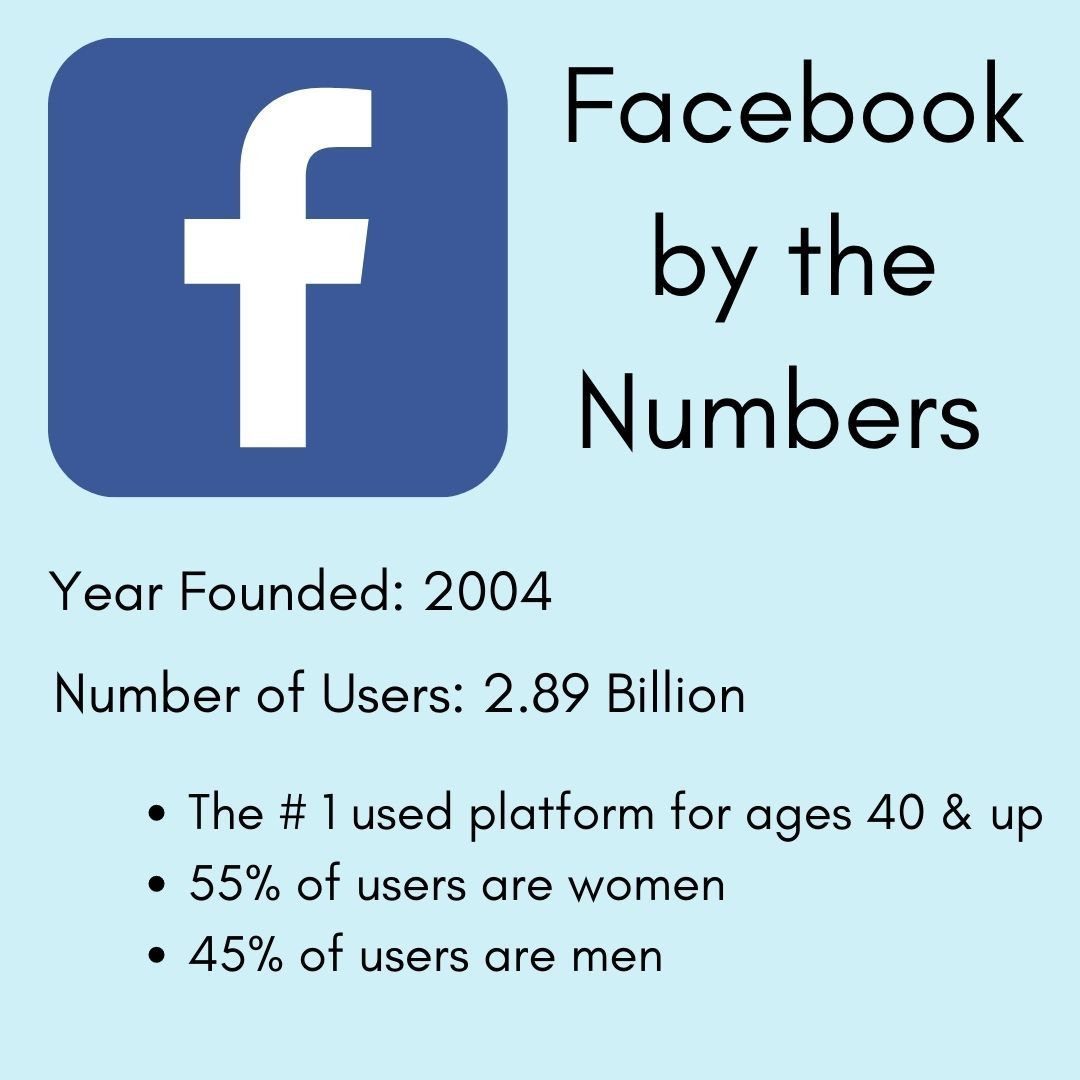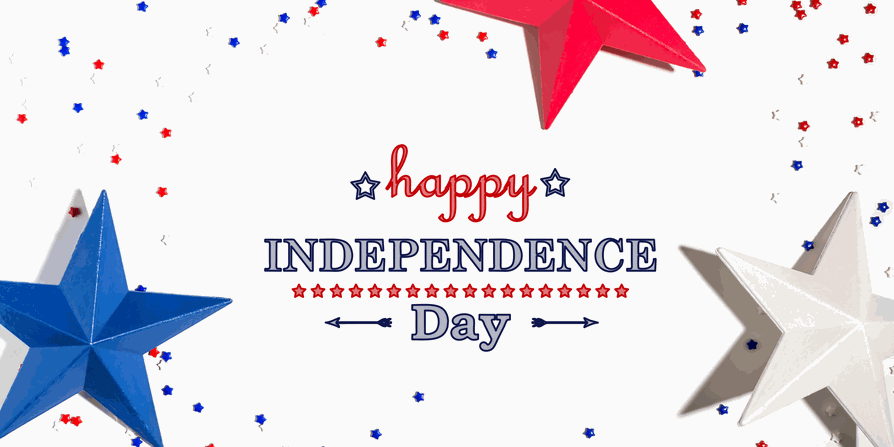Social Media is here to stay, and the reality is that a social media presence is no longer optional for businesses, it’s mandatory. Consumers are now more likely to visit a business’s Facebook page before visiting their website, and if you’re not in the game, you’ll be seen as (at best) behind the times, or (at worst) illegitimate. The good news is that there are tons of social media courses and seminars to familiarize you with how to leverage your social media presence. But depending on when you hopped on the social media train (or how long you’ve avoided it), even the learning tools can be intimidating if you don’t know the basics. You can’t learn to read without learning your ABCs, so if you’re someone who has previously listened to experts on social media strategy, but found yourself saying “Wait, what is a reel? What is a hashtag? Why are their different kinds of pages?” We’re hear to help. Here are the ABCs of social media:
Let's take a look at the most common platforms:
Demographics: With 2.89 billion users, Facebook is the largest Social Media platform on the planet. Ages 25-34 make up the largest demo on social media across the board and Facebook is no different. While the 65+ demo is technically the smallest on Facebook, Facebook is still the #1 used platform for people ages 40 and up.
Content to Expect: While stories and reels are features of Facebook, the majority of Facebook activity comes from scrolling, which means posts will generally have a combination of copy, graphics, and video. While video content is king across most platforms (including Facebook) it’s important to note that Facebook captions are more read than captions across other platforms, so throwing up great graphics without well thought out copy isn’t the way to go.
Tips and tricks: Treat your personal page and business page completely separate. Facebook offers free analytics for business pages, so you can see what your reach is. Groups are specific to Facebook and are a great way to form a private community around a webinar, event, etc.


Demographics: 25-34 remains the largest advertising audience on Instagram with men outnumbering women. However, women outnumber men among users 35 and up.
Content to Expect: Instagram is all about imagery. With Facebook and Twitter, it’s not uncommon to see users post without graphics on their personal pages (thought that’s never recommended for business pages), but with Instagram posting without an image or a video isn’t even an option.
Tips & Tricks: Short form video content is king. It doesn’t have to be professionally produced when you’re thinking about Instagram. Short, engaging, and candid is the way to go. And when thinking about short form content for social media, shoot vertical- not landscape. Reels & stories are ALWAYS vertical.
Demographics: Over 70% of Pinterest users are female. The largest demographic on Pinterest is 35-49 years old, followed by 18–29-year-olds. Over half of users are active at least once a week.
Content to Expect: Pinterest is a visual platform that allows users to create mood boards and find visual inspiration and ideas for things like interior design, recipes, fashion, travel, and more.
Tips & Tricks: Link graphics to the blog and services pages on your website. Pinterest wants a 50/50 split between your own content and repinning other content, so don’t just post about yourself, engage.


Demographics: Twitter is most popular among users ages 25-34. Worldwide, men use twitter more than women with women making up only a third of users.
Content to Expect: Twitter limits posts to 280 characters, with video capping at 60 seconds. While Twitter is technically a social media platform, most people go to Twitter for news and to interact with people they don’t already know. Twitter is direct access to businesses, celebrities, sports teams, and more.
Tips & Tricks: This is the place to be relatable, not salesy. If you look at the Twitter accounts of the most famous brands, they’re not begging for business in each post, they’re being funny, real, and asking questions which encourages engagement in other posts that do have a clear CTA.
Demographics: The largest age demographic for LinkedIn is ages 25-34 with men making up about 57% of users and women roughly 42%.
Content to Expect: LinkedIn is a professional space. Personal profiles tend to be designed as high-quality resumes as opposed to a collage of family/pet/food pictures.
Tips & Tricks: Only 3% of members post more than once a week, so LinkedIn is a great place to organically stand out. LinkedIn is a great place to find employees, potential collaborators, and seek out endorsements from those who’ve worked with you. Start by sharing articles in your niche and showing some behind the scenes of your work.

Best advice for someone who is a social media novice?
Don’t jump in all at once. If you’re managing and building your social media on your own, pick ONE platform (probably best to start with Facebook or Instagram). Learn that platform, give yourself time to get comfortable, learn, engage, and when you feel good about it and it’s a part of your regular workflow with ease, add another. At the start, it’s better to have one STRONG, well thought out presence than four flimsy and disjointed accounts.
BONUS! Your Social Media Glossary:
Personal Profile: A personal profile is about YOU. While many people use their personal pages to promote their businesses as well, personal profiles are where people post about their lives, families, pets, etc.
Business Page: A designated business page is about your business, not (necessarily) you as a person. This is where you promote your business hours, contact info, calls to action, services, new promotions, etc. Facebook and LinkedIn have completely separate templates for Personal vs. Business pages. With other platforms, it’s the name and content that shows the differentiation.
Post: This is most-commonly used for Facebook and Instagram posts that are not stories or reels.
Stories: Are usually in the moment posts that shares your day with users. They last for 24 hours and disappear afterward. Stories are used on Instagram and Facebook.
Reels: Short-form video content used on Instagram and Facebook. Facebook reels are 30 seconds or less. Instagram reels are 60 seconds or less.
Pins: Are essentially bookmarks that people use to save the content they’re curating on Pinterest.
Tweet: A post on Twitter. Also used as a verb when interacting with other Twitter users.
Facebook Group: A feature on Facebook that allows you to have a private community focused on any subject.









